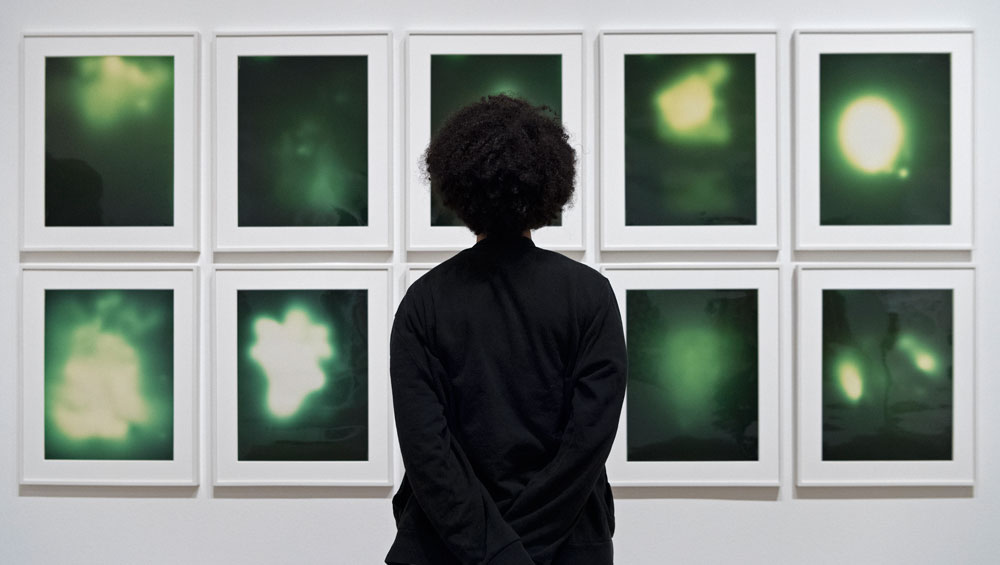
Tate Modern, London
2 May – 14 October 2018
by EMILY SPICER
Shape of Light is the Moby-Dick of exhibitions: it is a huge undertaking, the beginning is good, the end is OK, but much of the middle can be hurried through. That is not to say that there isn’t value in the repetitious abstracts that fill 12 rooms, but there are too many of them, too many photograms – the photographic equivalent of stencilling – too many close-cropped buildings and closeups of textured walls. Only die-hard photography enthusiasts – likely those with a keen interest in the technological development of the medium – will pause long.
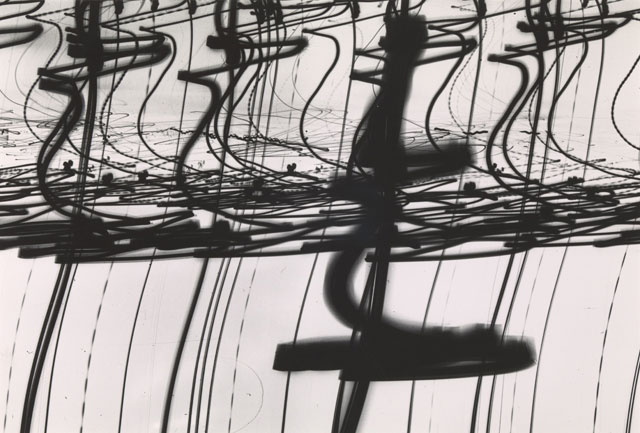
Otto Steinert. Luminogram II, 1952. Photograph, gelatin silver print on paper, 30.2 x 40.1 cm. Jack Kirkland Collection Nottingham. © Estate Otto Steinert, Museum Folkwang, Essen.
Photography’s early journey into abstraction may once have seemed like a daring breakaway from the medium’s previous purpose to capture and record, but what was once radical now feels almost twee, like the results of a thoughtful GCSE art student playing with their parent’s analogue SLR. Take, for example, Alfred Stieglitz’s photos of clouds or Bill Brandt’s truncated limbs on the pebbled beaches of Sussex. They seem too facile. Georgia O’Keeffe did it better.
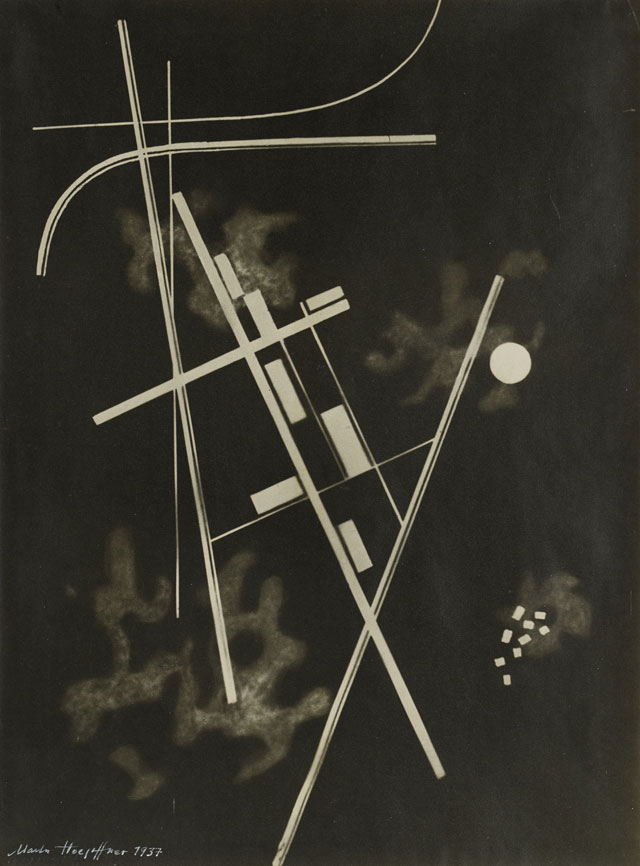
Marta Hoepffner. Homage to de Falla, 1937. Photograph, gelatin silver print on paper, 38.7 x 27.8 cm. Stadtmuseum Hofheim am Taunus. © Estate Marta Hoepffner.
All the way through this exhibition, the curators place photographic experimentations in the context of wider developments in art, with examples of cubism, abstract expressionism, Bauhaus and op art providing benchmarks. The 35mm camera became widely available around the time these 20th-century innovations redefined the art world, but photography seems to have followed suit, rather than taken the lead. Parallels are drawn with Wassily Kandinsky, Jackson Pollock, Piet Mondrian and Bridget Riley in an attempt, perhaps, to legitimise photographic experimentations, but this only succeeds in making the celluloid examples seem lacklustre in comparison to their canvas counterparts. Take Jaroslav Rössler’s photograph of a skylight, which, when hung next to Joan Miró’s Painting (1927), looks empty and cold. Comparing compositional similarities is one thing, but Miró’s canvases were all about colour, which doesn’t enter the photographs in this exhibition until the timeline reaches the 1970s.
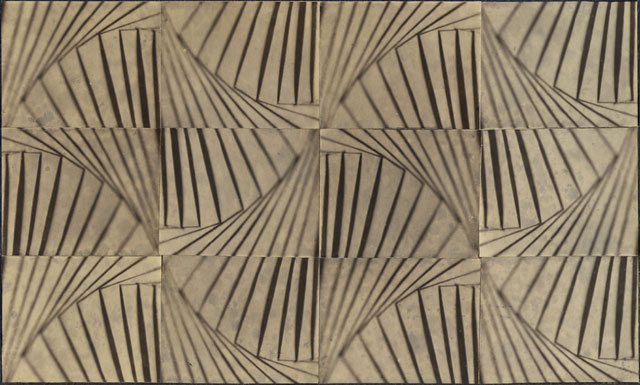
Luo Bonian. Untitled, 1930s. Courtesy The Three Shadows Photography Art Centre, Beijing. © Luo Bonian.
What this exhibition does, without intending to, is demonstrate that the abstract in photography comes into its own when the artist behind the lens does more than point and shoot at the real world. There are two collages by Chinese photographer Luo Bonian (1911-2002), who ingeniously transformed palm fronds and iron fences into geometric patterns. The original photographs were printed multiple times, cut into regular shapes and reassembled to form beautiful, understated collages. And the light drawings of Nathan Lerner (1913-97) and Arthur Siegel (1913-78), among others, are full of electric movement and depth. They seem born from some interdimensional insight, but comparing them to Pollock is not helpful. Even the curators point out that Pollock’s iconic paintings and these experimental light drawings have no connection whatsoever, but are “visual conclusions that strain at the seams of resemblance”.
-2017.jpg)
Maya Rochat. A Rock is a River (META RIVER), 2017. Courtesy Lily Robert. © Maya Rochat.
We move into the 1970s. Barbara Kasten’s (b1936) cyanotypes exploit the unique properties of photography. Her Photogenic Painting series (1974-75) was made by moving and folding textiles across the surface of photosensitive paper. The results resemble alien landscapes that could be Nasa images of the surface of one of Jupiter’s moons, with crisscrossed icy planes and rippling blue dunes. These are not fragments of other things, forcibly truncated into abstraction, but original creations made using the photographic process as a unique tool. This is where the strength of abstract photography lies.
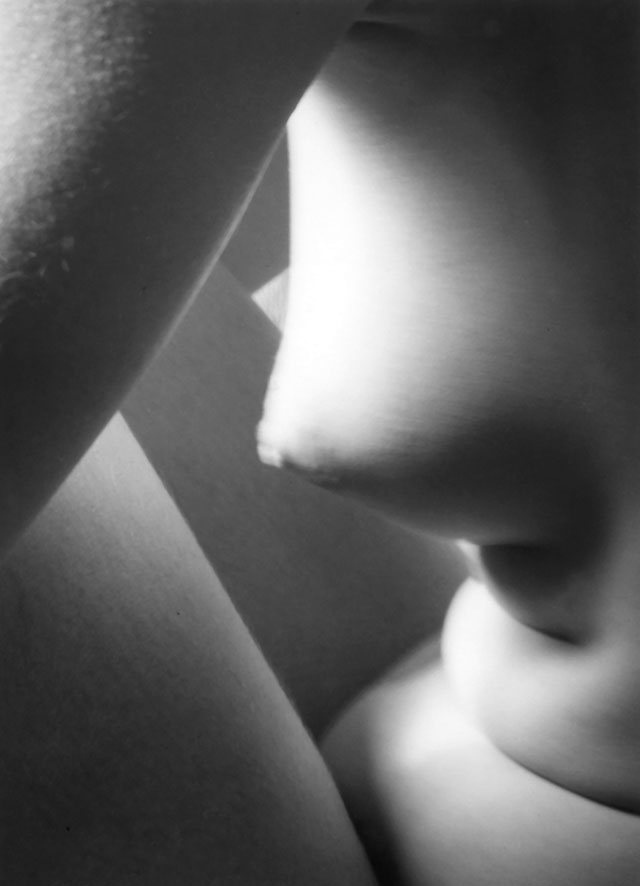
Imogen Cunningham. Triangles, 1928, printed 1947-60. Photograph, gelatin silver print on paper, 11.9 x 9.3 cm. Pierre Brahm. © Imogen Cunningham Trust. All rights reserved.
We are brought up to date with digital photography in the last room. Stan Douglas’s series Corrupt Files (2013) was born from a happy accident when an image on his camera recorded prematurely and was stored as bands of colour. Douglas (b1960) went on to use a software developer to tease out the file code, which became the raw material for kaleidoscopic patterns he later created with the help of a mixing desk. The final wall of this exhibition is covered in the psychedelic work of Maya Rochat (b1985). It is a mixed media collection created with a projector, prints and a mesh banner, among other things. It is a lot to take in after the largely monochrome rooms that have come before.
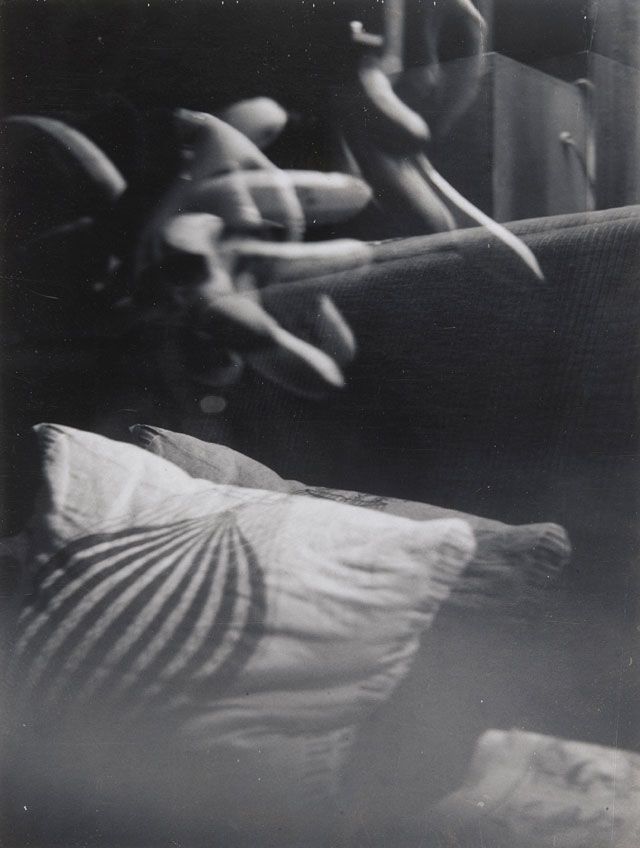
Man Ray. Unconcerned Photograph, 1959. Museum of Modern Art, New York. © Man Ray Trust/ADAGP, Paris and DACS, London 2018.
Up until the concluding room, the focus of this exhibition is so narrow and the point so laboured, that most of the fun and wonder is strangled from the subject. An exhibition a third of the length could have covered as much ground, without seeming like a longwinded lecture out to prove a point. But the catalogue is a beautiful thing – an abridged account of abstract photography – that would be a useful tool for getting to grips with the major players in the 20th-century avant garde.